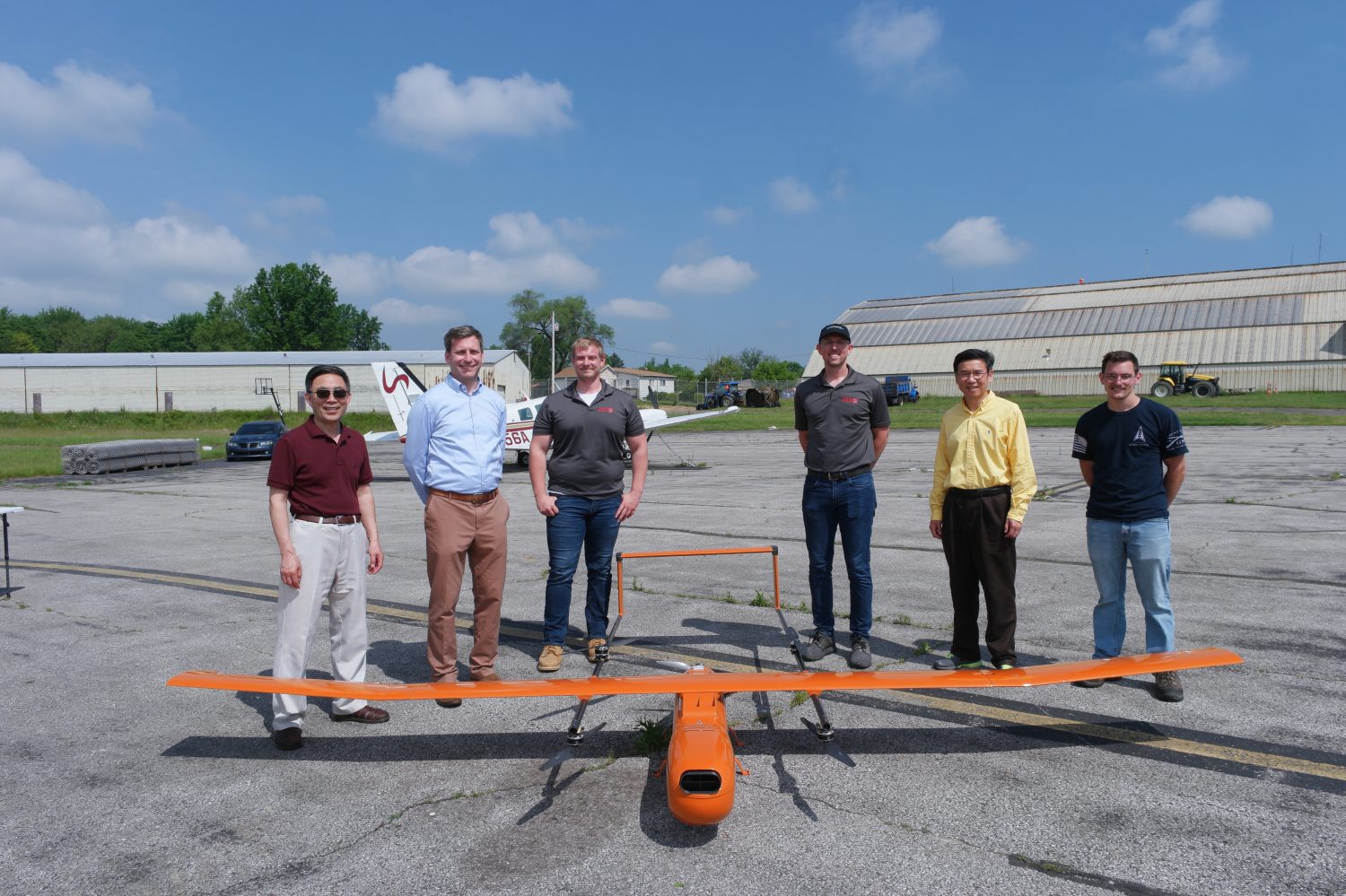
US mapping drone manufacturer Event 38 has revealed the successful test flight of one of its E400 UAVs adapted to operate using a hydrogen cell – a first step toward employing the cleaner and more efficient technology compared to batteries or gas power.
Ohio-based Event 38 said it conducted the flight on June 13 at the Kent State University airport – the school being one of several the company partnered with to adapt its drone to hydrogen cell use. That project dovetailed with other Ohio Federal Research Network (OFRN) initiatives Event 38 is involved with, permitting it to upgrade its most recent E400 mapping UAV as a E450 scaled to take on the larger hydrogen cell power source.
In doing that, Event 38 customized the E450’s carbon fiber structure to accommodate the bigger hydrogen fuel cell and tank, and developed a custom thermal management system to keep the cell cool while the drone was in flight. All the design, engineering, and assembly work were carried out at the company’s Richfield headquarters, which is equipped with full composite prototyping and custom manufacturing capacities
“This team was among the first to experiment with using fuel cells to power fixed-wing VTOL drones,” said Jeff Taylor, Event 38 founder and CEO. “(W)e’ve been making drones for a decade, so we were very eager to play a role in discovering how fuel cells can shape the future of unmanned flight technology. Plus, we recently completed another OFRN project where we integrated a 3D-printed antenna with the E400, our newest fixed-wing mapping drone, so we were excited to be part of another OFRN project.”
Read: Hydrogen cells extending drone flight time to two hours-plus
Researchers and companies around the world have been working on ways to develop hydrogen cell technology for use by drones, with Event 38 joining that effort to tap into that cleaner power source. Other programs have extended UAV flights by a factor of three or more compared to lithium-ion batteries. Meanwhile, because hydrogen cells involve fewer moving parts than other fuel systems, they demand far less maintenance, and are much quieter than gas-powered craft.
The Event 38 team worked several years toward the test flight of its hydrogen cell-equipped drone, but once the craft was aloft all that paid off. The E450 UAV flew for two hours and attained Level 7 status – that is, “system prototype demonstration in a relevant environment.” Taylor says the craft could remain in the air for up to six hours once equipped with a fully pressurized hydrogen tank.
Read: Deals and tests fuel advances in hydrogen cell development
But even as is, he believes their trials mark another step toward hydrogen tech becoming applicable to a full array of UAV operations.
“In the past, there were a number of drone applications that were deemed impractical because gas and battery power weren’t sufficient due to limited range, noise, or maintenance concerns,” said Taylor. “We’re excited to see which applications we can revisit now that fuel cell power is an option. For example, while Event 38 is not focused on delivery drones, our colleagues in the industry may now be closer to making delivery drones a reality with fuel cell power. Theoretically, if someone wanted to start a drone delivery service with a fleet of Event 38 drones, they could.”
FTC: We use income earning auto affiliate links. More.


Comments